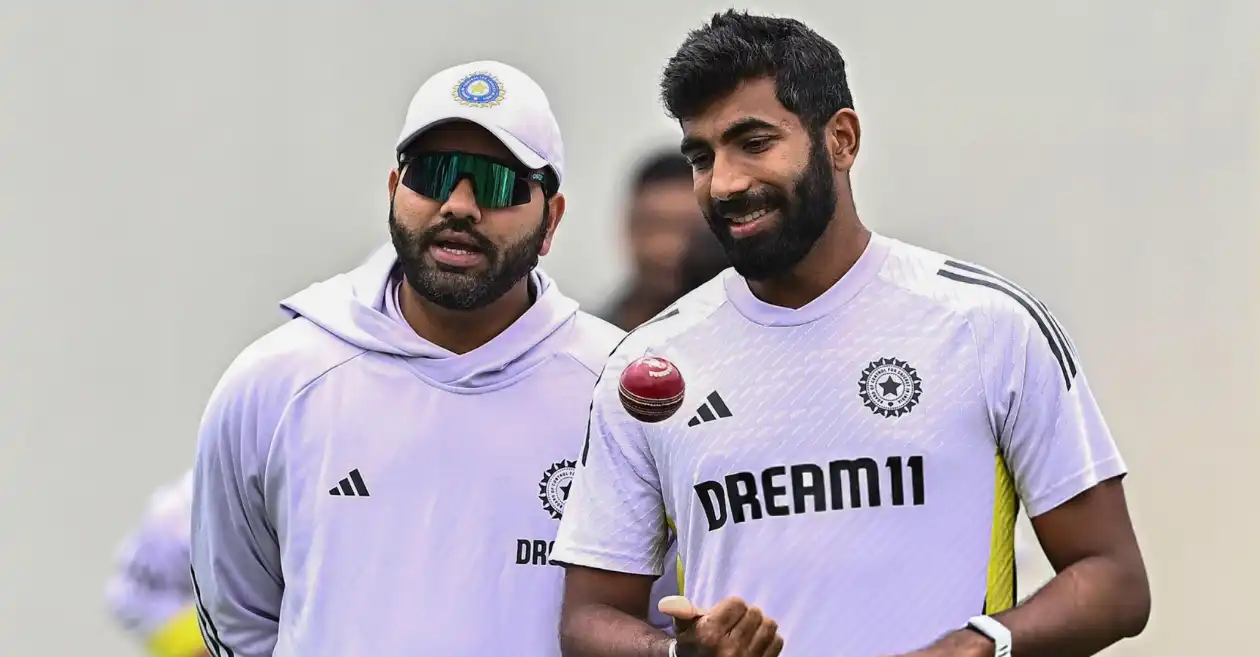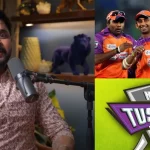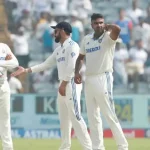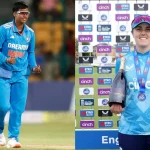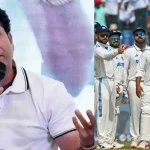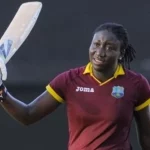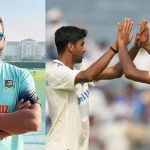Indian Test cricket stands on the brink of a significant transition. Rohit Sharma, a pillar of India’s red-ball side and one of its most composed and tactically astute leaders, has officially called time on his Test career. His retirement leaves behind not just a vacant spot at the top of the order, but also a leadership void that needs to be filled as India heads into a crucial new chapter.
As the Board of Control for Cricket in India (BCCI) prepares to announce the squad for the high-profile Test series in England starting June 20 in Leeds, one question looms large: who will be India’s next Test captain?
🇮🇳 The Legacy of Rohit Sharma – Calm in the Chaos
Rohit Sharma’s tenure as India’s Test captain may have been brief, but it was impactful. Appointed full-time Test skipper in 2022, Rohit led the team in 24 Tests, winning 12, losing 9, and drawing 3—a win percentage of 50%. More than the numbers, it was his poise under pressure and clarity in decision-making that stood out.
He captained India to a second successive World Test Championship final, inspired victories at home, and remained competitive overseas. At a time when leadership transitions often bring instability, Rohit provided India with a steady hand.
But now, with age and form prompting his exit from the Test arena, India must look ahead. And the timing couldn’t be more demanding. Touring England for a five-match Test series is never easy—the swinging Dukes ball, overcast skies, green pitches, and intense media scrutiny all contribute to making it one of the toughest assignments in cricket.
India now faces not just the challenge of winning in England but also the challenge of leadership. The next captain must not only have cricketing smarts, but also command respect in the dressing room, handle media glare, and inspire a new generation of Test cricketers.
Here’s a look at the top contenders to carry the torch forward.
1. Jasprit Bumrah – The Silent General
There’s a reason Jasprit Bumrah is frequently mentioned in captaincy conversations. He’s more than just India’s pace spearhead; he’s a thinking cricketer, calm under pressure, and commands enormous respect from his peers.
Bumrah’s leadership credentials were on full display when he captained India in the rescheduled fifth Test at Edgbaston in 2022. Despite limited preparation, India dominated much of that match. Bumrah’s own performance—a fiery spell with the ball and a world-record 29-run over off Stuart Broad—underscored that captaincy does not dent his focus or execution.
His recent exploits in the Border-Gavaskar Trophy reaffirmed his stature. As vice-captain, he led the bowling attack with poise, intelligence, and fire. He ended the series as the highest wicket-taker, delivering when it mattered the most.
Pros:
-
A natural leader of the bowling unit.
-
Tactical and cool-headed.
-
Already has Test captaincy experience.
Challenges:
-
Managing workload and fitness is crucial.
-
Fast bowlers rarely take on full-time captaincy roles due to physical strain.
Still, if India is looking for a short-term leader who commands immediate respect and has already proven himself tactically, Bumrah is a compelling candidate.
2. KL Rahul – The Balanced Thinker
KL Rahul is the quintessential modern cricketer—calm, composed, and capable across formats. He’s captained India in ODIs and Tests and has been part of leadership groups for years now. In Rohit’s absence during past Test series, Rahul has stepped in and led without fuss.
What makes Rahul a strong candidate is his versatility. He has performed in challenging overseas conditions—his hundreds in England, South Africa, and Australia testify to that. His batting is elegant and assured, and his leadership style mirrors that—never too loud, never too passive.
After battling injuries, Rahul’s recent return to the Indian side has been encouraging. He’s shown form and fitness and has started playing with renewed hunger.
Pros:
-
Leadership experience across formats.
-
Strong overseas record, especially in England.
-
Temperamentally calm and reliable.
Challenges:
-
Inconsistency with the bat in recent years.
-
Not a permanent fixture in the XI depending on team combination.
Still, Rahul’s maturity and familiarity with leadership dynamics make him a safe and stabilizing option for the captaincy.
3. Rishabh Pant – The Wild Card With Fearless Fire
Rishabh Pant is not your conventional leader—but perhaps that’s exactly what Test cricket needs right now. Unorthodox, expressive, and fearless, Pant has already stamped his authority on Indian cricket with his match-winning performances and electric presence.
His iconic fourth-innings knock at the Gabba in 2021—where he fearlessly took down Australia’s pace battery to seal a historic series win—is the stuff of folklore. But beyond the runs, Pant’s on-field chatter, body language, and instinctive field placements often show shades of a natural leader.
Having returned from injury, Pant has shown signs of renewed purpose. His leadership in the IPL and brief stints leading India in T20Is have offered glimpses of his capabilities.
Pros:
-
Game-changer with the bat.
-
Energetic presence behind the stumps—a captain who’s always in the game.
-
Commands the respect of younger players.
Challenges:
-
Needs to solidify his batting form in Tests.
-
Leadership may add pressure to a demanding dual role (batting + keeping).
If India wants an aggressive, attacking mindset to shape their next Test era, Pant is the man to watch. He represents a generational shift and could redefine how Test cricket is played and led.
Special Mention: Shubman Gill – The Future Is Now?
If the BCCI is eyeing long-term stability and grooming a leader for the future, Shubman Gill is a name that will keep popping up.
At just 25, Gill has already achieved plenty. He was one of the heroes of the 2020-21 Australia series, has notched up centuries across formats, and more recently led India to victory in the Champions Trophy 2025 as vice-captain. His IPL captaincy with Gujarat Titans—where he has shown tactical clarity and maturity—has further added to his leadership credentials.
Gill has a classic technique suited for Test cricket, and he’s a calm thinker. He often appears to be studying the game—absorbing, reflecting, evolving.
Pros:
-
Young and already groomed as a future leader.
-
Strong technical base and cricketing IQ.
-
Already captains in IPL and was part of India’s leadership group in Champions Trophy.
Challenges:
-
Needs more time and stability in the Test side as a batter.
-
May be too early for full-time Test captaincy on a tough England tour.
Still, if the selectors want to take a bold step toward the future, Gill could be a visionary pick—a decision akin to Dhoni’s elevation in 2007 or Kohli’s in 2014.
What Lies Ahead
The next few weeks are crucial. The England tour, which begins in Leeds on June 20, is not just another overseas assignment. It’s a cultural and cricketing challenge—a litmus test of temperament, technique, and leadership.
The decision the BCCI makes will shape the future of India’s red-ball ambitions. Do they go with a seasoned hand like Rahul? Do they gamble on Bumrah’s cool execution? Do they embrace Pant’s flair and unpredictability? Or do they make a long-term bet on Gill, grooming him from now for a decade to come?
With a wealth of leadership talent and the experience of building transitions in the past, Indian cricket stands at a familiar crossroads—one with immense potential and some risk. But if history is anything to go by, India has often risen through such transitions stronger than before.
As fans, we await not just the squad announcement—but a vision. A vision for Indian Test cricket post-Rohit Sharma. One that builds on the solid foundation he laid and takes India closer to that elusive dream: winning a Test series in England, and perhaps, lifting the next World Test Championship mace.
Please check for information on the best betting sites in India – https://selectory.org/best-betting-sites/
